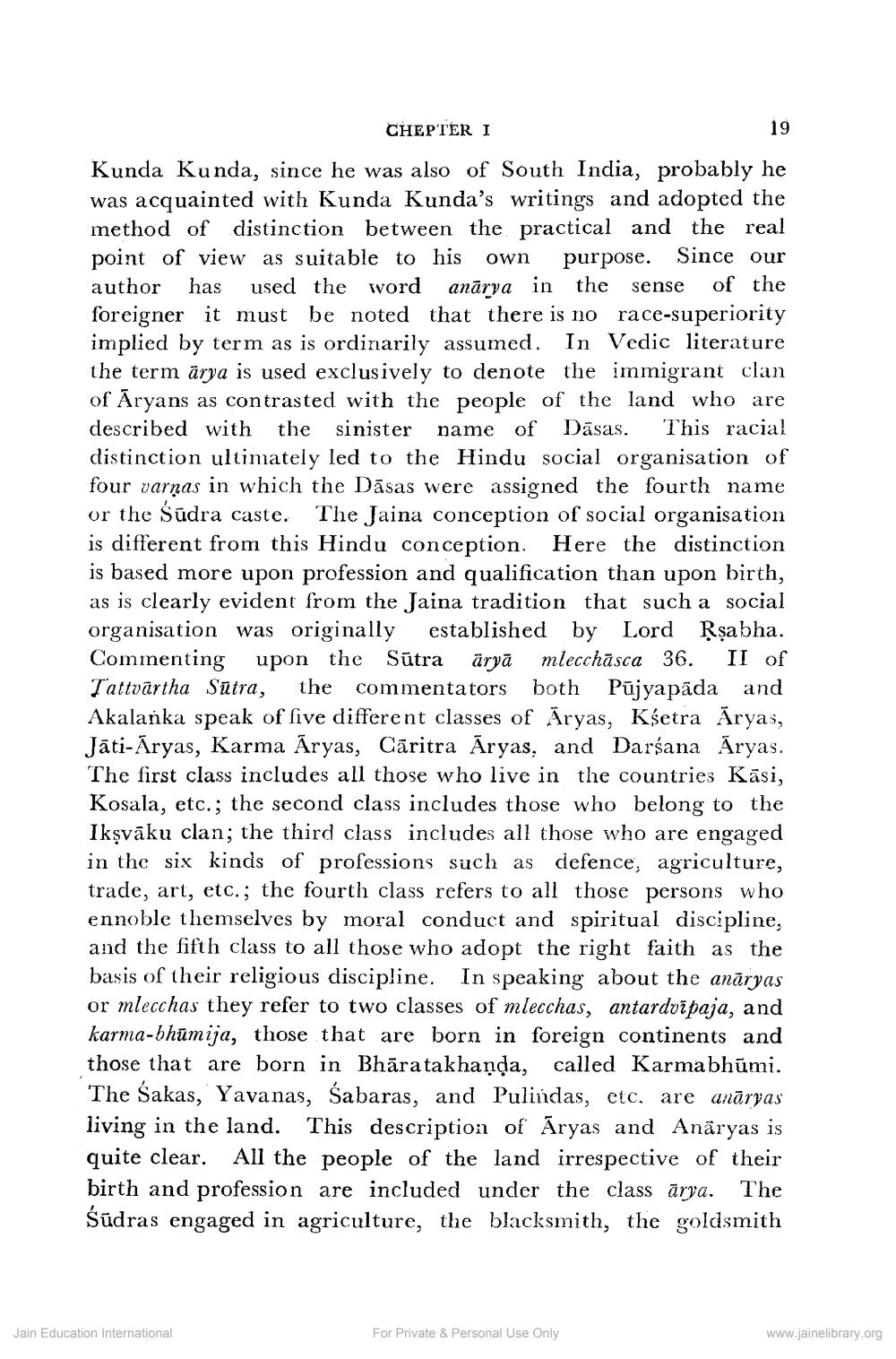________________
CHEPTER I
19
Kunda Kunda, since he was also of South India, probably he was acquainted with Kunda Kunda's writings and adopted the method of distinction between the practical and the real point of view as suitable to his own purpose. Since our author has used the word anārya in the sense of the foreigner it must be noted that there is no race-superiority implied by term as is ordinarily assumed. In Vedic literature the term ārya is used exclusively to denote the immigrant clan of Aryans as contrasted with the people of the land who are described with the sinister name of Dāsas. This racial distinction ultimately led to the Hindu social organisation of four varnas in which the Dāsas were assigned the fourth name or the Šūdra caste. The Jaina conception of social organisation is different from this Hindu conception. Here the distinction is based more upon profession and qualification than upon birth, as is clearly evident from the Jaina tradition that such a social organisation was originally established by Lord Rşabha. Commenting upon the Sūtra äryā mlecchāsca 36. II of Tattvārtha Sūtra, the commentators both Pūjyapāda and Akalanka speak of five different classes of Aryas, Kśetra Āryas, Jāti-Aryas, Karma Āryas, Cāritra Āryas, and Darsana Áryas. The first class includes all those who live in the countries Kāsi, Kosala, etc.; the second class includes those who belong to the Ikşvāku clan, the third class includes all those who are engaged in the six kinds of professions such as defence, agriculture, trade, art, etc.; the fourth class refers to all those persons who ennoble themselves by moral conduct and spiritual discipline, and the fifth class to all those who adopt the right faith as the basis of their religious discipline. In speaking about the anāryas or mlecchas they refer to two classes of mlecchas, antardvīpaja, and karma-bhūmija, those that are born in foreign continents and those that are born in Bhāratakhanda, called Karmabhūmi.
The Sakas, Yavanas, Šabaras, and Puliúdas, etc. are anāryas living in the land. This description of Aryas and Anäryas is quite clear. All the people of the land irrespective of their birth and profession are included under the class ārya. The Śūdras engaged in agriculture, the blacksmith, the goldsmith
Jain Education International
For Private & Personal Use Only
www.jainelibrary.org




